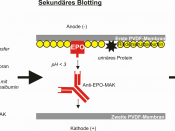Blood Doping
On the last day of the 2002 Winter Olympics in Salt Lake City, three cross-country skiers were banned from the Games for blood doping. Larissa Lazutina of Russia and Johann Muehlegg of Spain had their gold medals taken away. Olga Danilova was disqualified from the 30K classical race in which she finished eighth. Blood doping has become an integral part of sports and fair play. It enhances your performance by increasing red blood cell mass and thereby delivering more oxygen to muscle. This manipulation has gained notoriety in the sports world for what it can do for an athlete during high endurance events like cycling or cross-country skiing.
Blood doping is a method of increasing the number of red blood cells in the body, which in turn carry more oxygen to the muscles. It can improve the athlete's ability to perform sub maximal and maximal endurance exercise. In addition blood doping can help reduce physiologic strain during exercise in the heat and perhaps altitude.
Blood doping, which is also known as induced erythrocythemia, is the intravenous infusion of blood to produce an increase in the blood's oxygen carrying capacity.1 Several weeks before competition, an athlete withdraws one to four units of his/her blood (1 unit = 450 ml of blood). The blood is then centrifuged and the athlete immediately re-infuses the plasma components and places the remaining red blood cells in cold storage. Between one day and a week before an important event, the athlete re-infuses these red blood cells. When this process is performed accurately, an athlete can increase his/her hemoglobin level and red blood cell count by up to 20%. This provides the body with an increased oxygen level to greater improve athletic performance and increase the body's potential. These extra red blood cells carry...


